Hovenweep National Monument is a magical place, especially on a clear, sunny day in late September. The ancient, multistory towers of Hovenweep are perched along canyon rims and balanced on boulders. They were so well constructed by the Ancestral Poebloan people (sometime between 1200 and 1300 CE) that it’s hard to believe they have withstood the elements for hundreds of years.
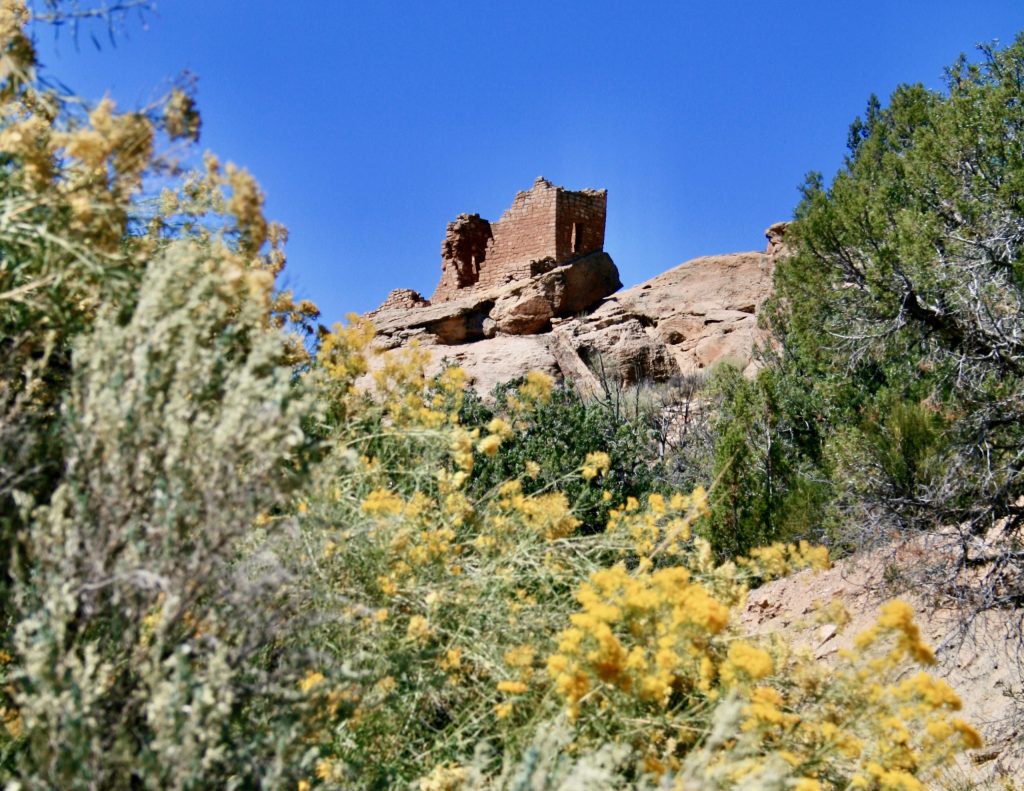
The castle-like Stronghold House (part of the Square Tower Group) as seen from our delightful hike through Little Ruin Canyon in Hovenweep. The yellow blooms of rabbitbrush are in the foreground. © Laurel Kallenbach
Hovenweep National Monument, which straddles the Colorado/Utah border has a lovely visitor’s center, which introduces visitors to the area and its archaeological sites. Our drive there was scenic—including the open grasslands along the roads, which were blanketed with rabbitbrush blooming with sulfur-yellow flowers—plants you might not even notice until they bloom. Interspersed between them were prickly cholla cactus and some perennial range grasses.
Ken and I spent about three hours in this small park, although next time I’d love to camp at Hovenweep for one or two nights so that we’d have more time to explore this beautiful area, best known for its ruins. Once home to more than 2,500 people, Hovenweep includes six prehistoric villages built between 1200 and 1300 CE.
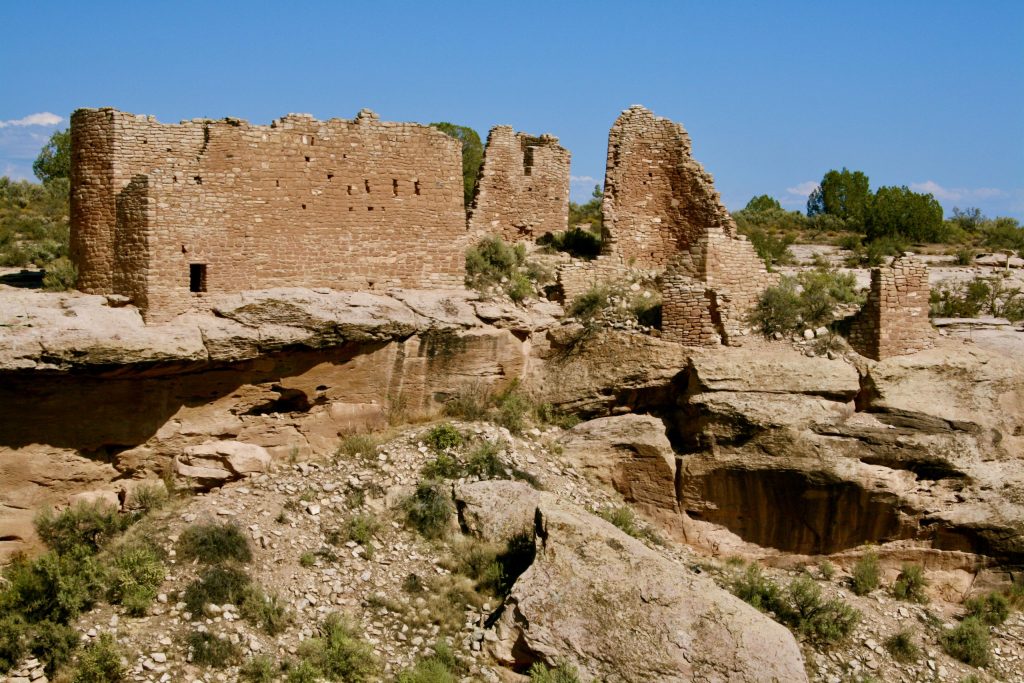
Hovenweep: An ancient city in the American Southwest. ©Laurel Kallenbach
We hiked the enchanting two-mile trail through Hovenweep’s Little Ruin Canyon, an experience to be savored. The light and the temperatures are probably best in the morning or late afternoon, but we arrived there in early afternoon. (Temperatures during late September’s Indian Summer were about 80 degrees.)
Filled with square, round and even a spiral towers—including an assortment of other buildings, storerooms and a “castle” complex — this narrow canyon must have been the grand, 13th-century Manhattan of the Southwest.
Like most of the Ancestral Puebloans’ impressive architecture, Hovenweep’s dwellings were abandoned just one or two generations after they were built. Drought and deforestation probably factored into the people’s departure, and they moved south where resources were more plentiful.
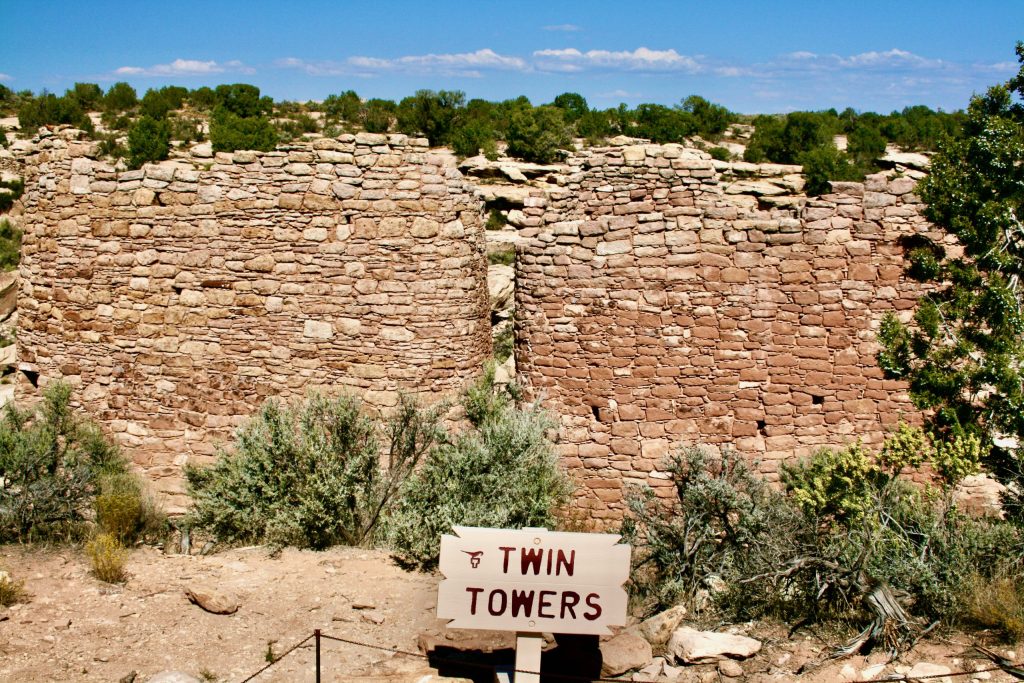
Hovenweep features twin towers among its architectural wonders. ©Laurel Kallenbach
The wonderful hike through Little Ruin canyon is self-guided, but there’s a descriptive brochure that identifies all the prehistoric buildings. At the end of the hike, we stopped and rested on a bench, and like the area’s collared lizards, we rested, soaking up the sunshine. Overlooking the canyon under brilliant blue skies—with the golden sun on the stone and twisted pines—was magical.
For more information on the region, visit Mesa Verde Country visitor information bureau.
—Laurel Kallenbach, freelance writer and editor
Originally posted October 20, 2008
Read more about my travels in America’s national parks and monuments:
- Sea Kayaking in California’s Channel Islands
- Snowshoeing in Rocky Mountain National Park
- Fossils Come Alive at Dinosaur National Monument
- 10 Reasons to Celebrate America’s National Parks
- Solar Power Lights Ft. McHenry Historic Monument
- Mesa Verde: An Archaeological Pilgrimage
- Sleep in a Sustainable Hotel in Mesa Verde National Park
- Treasures of Canyons of the Ancients National Monument
- Explore a ruined pueblo: Canyons of the Ancients National Monument
- Discover Painted Hand Pueblo in Canyons of the Ancients
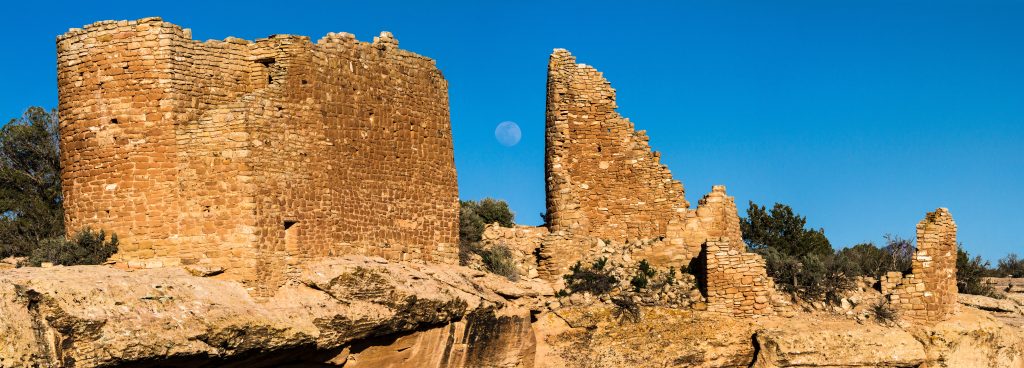
The square-tower group at Hovenweep. National Park Service photo: Jacob W. Frank

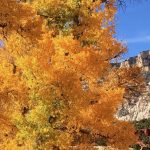
Going to Hovenweep a few years ago was a magical experience. Loved camping there too…
I think it would be lovely to be in the canyon at sunrise or sunset. And it’s such a quiet location that you’d really feel the ancient setting.